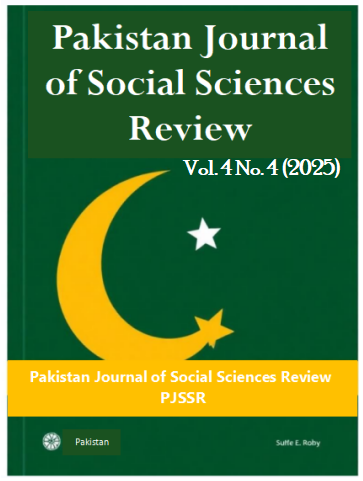MONETARY POLICY AND INFLATION DYNAMICS IN PAKISTAN: STRUCTURAL BARRIERS AND THE LIMITS OF POLICY TRANSMISSION
Abstract
This paper explores the complex relationship between monetary policy and inflation in Pakistan, focusing on the effectiveness of interventions by the State Bank of Pakistan, particularly in the post-2020 period, and identifying the core structural constraints to effective policy transmission. Drawing on an extensive literature review and a synthesizing theoretical framework that incorporates the Quantity Theory of Money, the expectations-augmented Phillips Curve, and the concept of Fiscal Dominance, the study analyzes the multifaceted drivers of Pakistan’s persistent double-digit inflation. The empirical evidence indicates that while the State Bank of Pakistan has made significant progress toward greater autonomy and has adopted modern, market-oriented policy tools, its efforts to anchor prices are frequently undermined. Inflation in Pakistan is driven primarily by a combination of demand-pull factors, stemming from fiscal dominance and government borrowing, cost-push shocks, including imported inflation from global commodity price fluctuations and exchange rate depreciation, as well as regulated utility prices and vulnerabilities in food supply chains, alongside structural rigidities in the economy. The research identifies a weak and delayed monetary policy transmission mechanism, transmitted through the channels of interest rates, credit, and exchange rates, as a fundamental obstacle. This challenge is exacerbated by the oligopolistic structure of the banking sector, the significant size of the informal economy, and the government’s large borrowing requirements. Achieving lasting price stability in Pakistan will require a coordinated approach, encompassing robust fiscal consolidation, targeted structural reforms, enhanced central bank autonomy, and transparent communication to manage and anchor inflation expectations.
Keywords
Monetary Policy, Inflation, Fiscal Dominance, Policy Transmission


